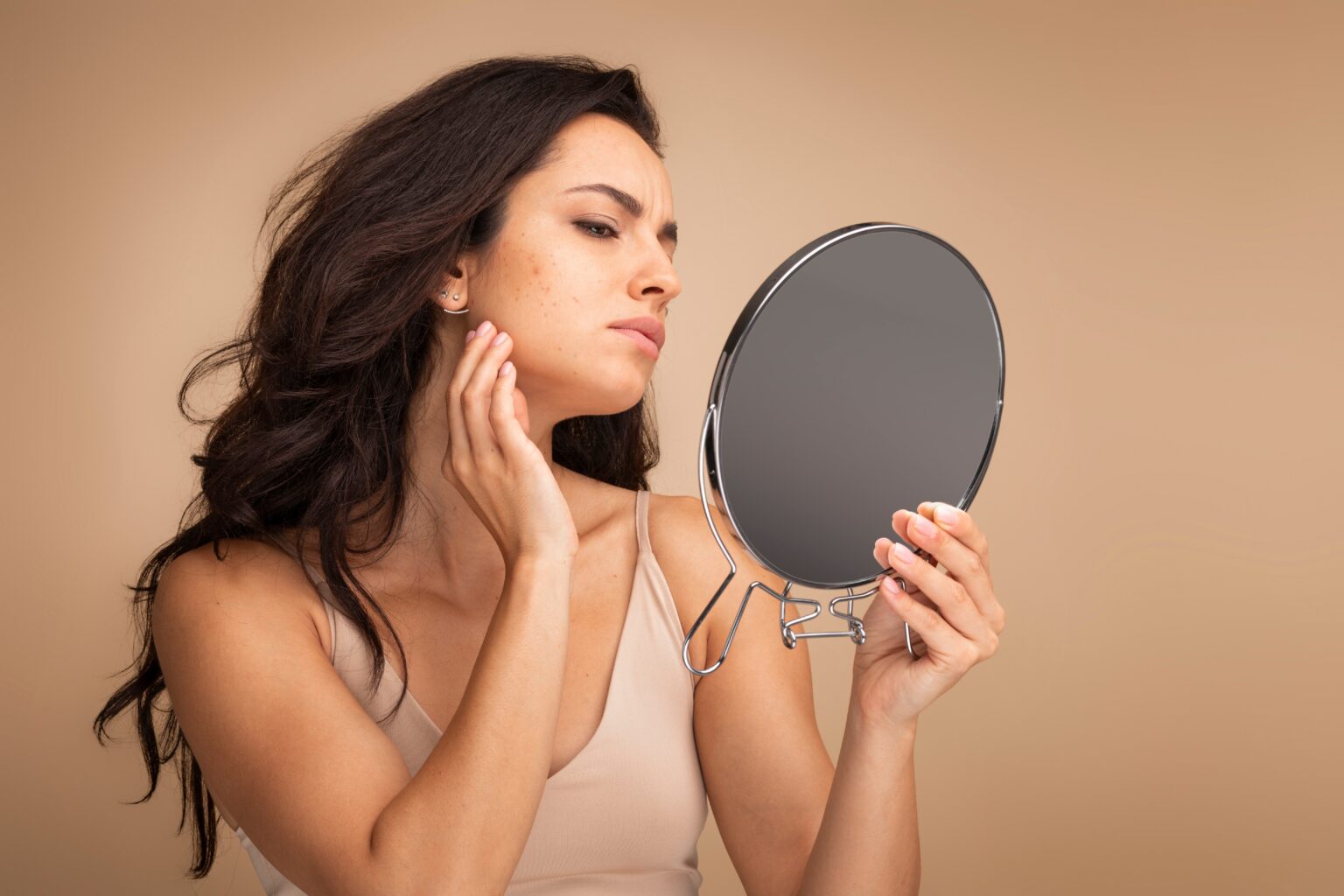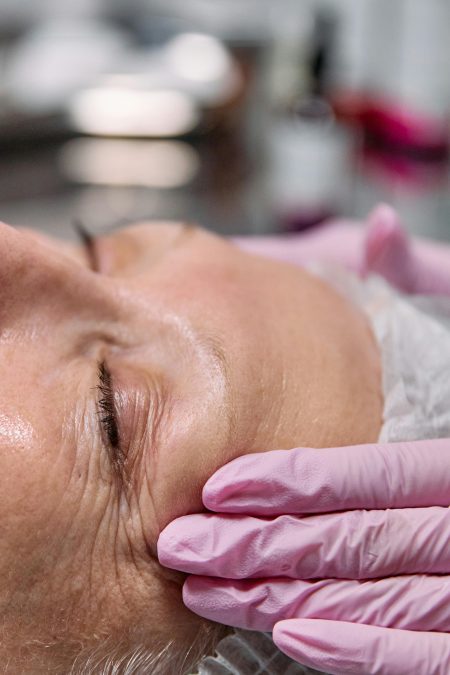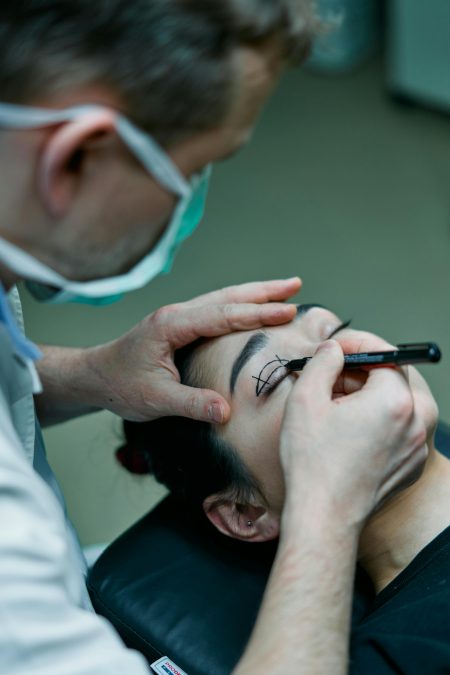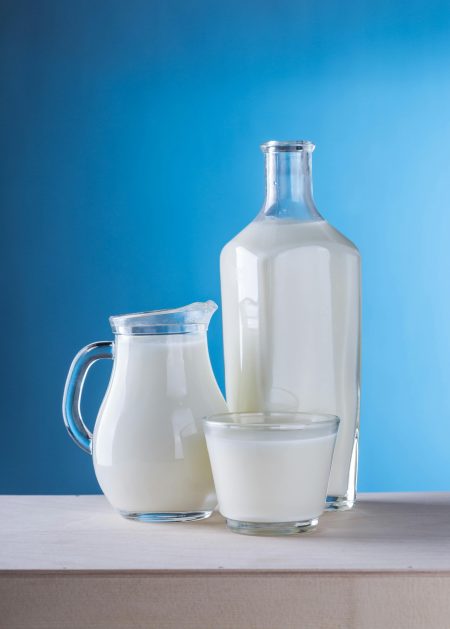Dealing with pimples can be a frustrating experience, but when it comes to jawline acne, the frustration can be taken to a whole new level. Jawline acne can manifest as a cluster of red zits or large painful bumps. However, identifying the root cause of this type of acne can be easier than you think.
We will help you identify the most common causes of jawline acne. By understanding the causes of this frustrating condition, you can take the necessary steps to achieve clearer skin and boost your confidence.

1. Hormonal Fluctuations
How to Treat It
If you are experiencing deep-set, tender cysts along the jawline and chin that can last a while, you may be experiencing hormonal acne. This type of acne is caused by an increase in oil production, which combines with dead skin cells and bacteria to form cystic acne. Hormonal acne is often observed in women during their menstrual cycle, pregnancy, or when afflicted with conditions such as polycystic ovary syndrome (PCOS). Changes in stress levels can also produce these changes.
To treat hormonal acne, a combination of treatments may be necessary. Retinoids can be used to prevent pores from clogging. Women can also try treatments that regulate hormones, such as certain birth control pills or spironolactone. It is important to get a personalized treatment approach from a board-certified dermatologist, who can also help manage any underlying hormonal issues.

2. Chafing/Friction
How to Treat It
Chafing and friction can cause acne to develop along the jawline, resulting in inflamed and non-inflamed blemishes like pustules and blackheads. This is commonly known as acne mechanica, and it can occur due to various reasons such as wearing masks, chin straps or helmets, having a beard, or even rubbing your phone against your face.
To treat chafing and friction-induced acne, the first step is to minimize the source of physical irritation. Additionally, it is important to clean anything that comes into contact with your skin. Some doctors suggest using a product containing salicylic acid to dissolve sebum from the pores.
Here are some additional tips to treat chafing and friction-induced acne:
- Avoid wearing tight-fitting clothing or accessories that rub against your skin.
- Use a gentle, non-comedogenic moisturizer to keep your skin hydrated and protected.
- Wash your face twice a day with a mild cleanser to remove dirt, oil, and bacteria.
- Avoid touching your face with your hands to prevent the spread of bacteria.
- Consult a dermatologist if your acne persists or worsens despite these measures.
By following these tips, you can effectively treat chafing and friction-induced acne and maintain healthy, clear skin.

3. Your Diet
If you are struggling with cystic-like acne lesions that are deep in the skin and may not surface, modifying your diet could potentially help. Studies have shown that diets consisting of high glycemic index foods, such as white bread, white rice, and sugary drinks, can cause a rapid spike in blood sugar. This spike in blood sugar can initiate a hormonal cascade that stimulates sebum production and triggers acne formation.
To treat this type of acne you will need to modify your diet to exclude or decrease high glycemic index foods. Instead, try increasing your intake of low glycemic index foods like broccoli, apples, peanuts, and chickpeas. This can potentially reduce the risk of developing new acne.
Making changes to your diet can be a simple yet effective way to treat cystic-like acne lesions. By avoiding high glycemic index foods and incorporating low glycemic index foods, you may be able to reduce the occurrence of acne and improve your skin health.

4. Makeup & Skincare Products
How to Treat It
If you have small blemishes, blackheads, whiteheads, or tiny reddish spots on your jawline, it could be due to certain cosmetic and skincare items that have pore-blocking ingredients. To treat this type of jawline acne, make adjustments to the products you use. Eliminating the culprit(s) will help tremendously.
To start with, use products labeled as “non-comedogenic” or oil-free. These products are less likely to clog pores and cause acne. You can also test products before fully applying them. Apply a small amount of the product on your jawline and wait for a few hours to see if any reaction occurs. If there is no reaction, you can use the product.
By making simple adjustments to your makeup and skincare routine, you can prevent jawline acne and achieve clear skin.

5. Poor Cleansing Technique
If you’re experiencing clogged pores and large pimples at the jawline or just under it, poor cleansing technique may be the culprit. Oftentimes, we tend to focus on cleansing our cheeks, nose, and forehead, neglecting our jawlines and necks. Leaving skincare products on your skin overnight can also lead to clogged pores and breakouts.
How to Treat It
To effectively treat poor cleansing technique, increase your face wash time to one or two minutes and make sure to cleanse your jawline and neck thoroughly. Double washing and/or gently rubbing a cotton pad soaked in micellar water along this area can ensure a great clean. It’s important to rinse your cleanser well from this area and check for any product residue on the pad or washcloth when drying. By taking these steps, you can effectively treat poor cleansing technique and prevent future breakouts.
6. Progesterone Birth Control
Progesterone birth control, such as an IUD, can lead to jawline acne and acne on the lower part of your face due to the hormonal surge. Inflammatory acne is generally more deep-seated and tender. If you experience acne after starting a new form of contraception, you should discuss your concerns with your provider. You can also consult a board-certified dermatologist to develop a treatment plan to address acne flares.









